Tank Pad foundations (Fig. 1) are-
- Used for Vertical storage tanks, Circular in shape having a larger diameter
- Used where there are no anchorage requirements for the tank (as specified by the tank vendor)
Components of Tank Pad foundation:
- Tank Pad body
- Tank Pad Shoulder
- Finishes
Tank foundation functions and requirements :
The functions of a tank foundation are:
- To spread and transfer the load from the tank and its contents via the tank foundation body and shoulder to the subgrade so that the settlement remains within the allowable limits.
- To provide a smooth surface with sufficient bearing capacity and stability for tank construction and operation
- To channel rainwater away from the tank shell and tank bottom quickly
The requirements for the shoulder of the tank foundations are:
- To provide sufficient lateral support to the tank foundation during construction, operation, and maintenance activities
- To resist edge settlement beneath the tank shell
- To resist erosion by wind and/or water
Design Parameters:
The tank foundation shall be designed to ensure that it is capable of:
- absorbing subsoil deformations to ensure deformations in the tank base remain within limits
- the possible unequal foundation pressures
Under certain circumstances, soil improvement under the tank foundation shall be considered in order to:
- provide a foundation with sufficient strength
- reduce large settlements
The minimum elevation of the tank foundation at the base of the tank shall be 0.60 m above the adjacent terrain.
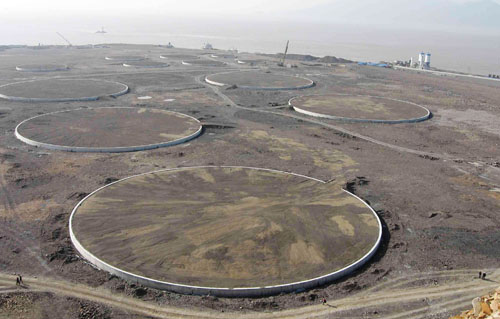
Drain pipes shall be placed around the circumference of the foundation in order to detect leakages (if any) and to prevent the build-up of pore pressure due to liquid accumulating in the tank pad.
Geo-textile membrane shall be installed under the surface finishing to the shoulder if there is a possibility of washout of fine materials
Stability analysis of the shoulder and tank foundation shall take into account the following aspects :
- wind loads
- earthquake loads
- initial height above adjacent ground level
- highest possible groundwater level
- the angle of slope of the shoulder
- geotechnical properties of the tank foundation materials and subsoil
- load provided by the tank and its contents during hydrostatic testing, operation, and maintenance
Tank Foundation Shoulders:
The shoulder width shall be selected such that the stability of the foundation, shoulder, and subsoil is ensured. The minimum width of the tank foundation shoulder (S) depends on several aspects:
- height of the tank (H)
- the density of the product
- the slope of the tank foundation edge
- height of the tank foundation (T)
- The shoulder shall have a gradient of 1:10. The slope to the shoulder shall not exceed a gradient of 1:1.5.
Materials:
Tank pad foundations are constructed with durable, granular materials, such as crushed rock, coarse sand, etc.
The tank foundation body shall be constructed from clean granular materials which meet the following requirements:
- not crushable
- low compressibility
- high friction properties
- low silt content
- free draining
- insensitive to weathering, chemical changes
- easy to compact
- not sensitive to liquefaction (especially when constructed in earthquake zones).
Well-compacted sand, especially coarse sand, meets the above requirements providing the chemical and mechanical stability of the minerals is guaranteed.
In order to prevent the capillary rise of the groundwater the upper 200 mm of the tank foundation shall comprise coarse sand.
Tank foundation finishes:
The purpose of the surface finishing layer under the tank is:
- To act as a barrier to corrosion promoted by water or water vapor, together with chemicals that may be present in the tank foundation or subsoil
- To promote a uniform distribution of stress from the tank bottom to the tank foundation
- To allow thermal expansion of the tank bottom
The function of the surface finishes of the tank foundation shoulder is to protect the foundation from damage caused by weathering, erosion, and construction, operation, and maintenance activities.
The surface finish layer under the tank shall be a mixture of sand and bitumen.
The final levels of the placed and compacted surface finish under the tank edge between any two points 10 m apart around the periphery of the tank shall not be greater than +/- 6 mm.
The tank foundation shoulder may, like bund walls, be covered by a mixture of sand, bitumen, and cement or lime (i.e. a wet sand mix).
The surface finish to the shoulder shall have a gradient slope of 1 vertical in 10 horizontal from the underside of the annular plate of the tank, to avoid ingress of water under the tank.
During the construction of the tank foundation, necessary tests are performed on each 0.3m thick layer placed and compacted.
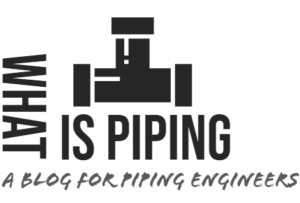
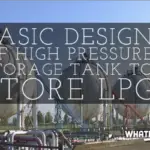
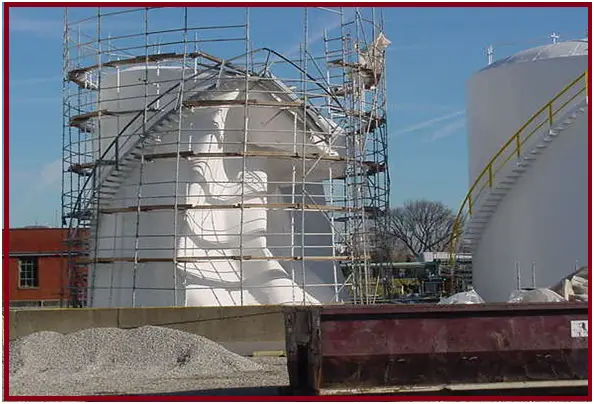
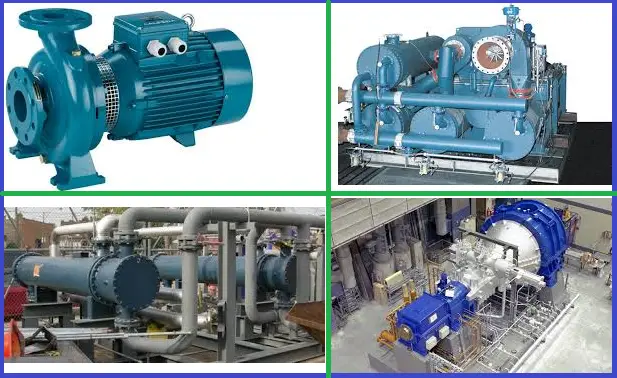
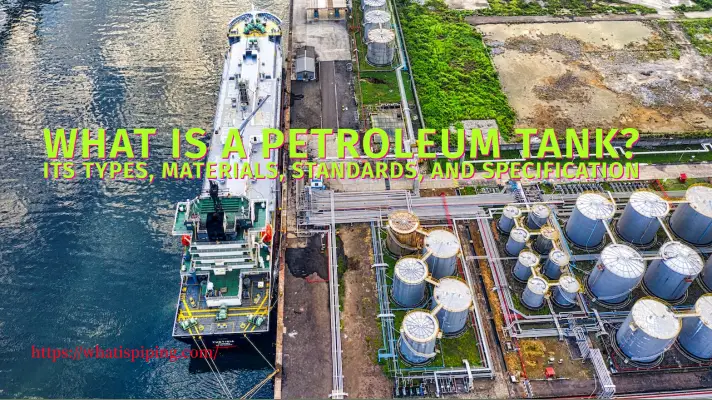
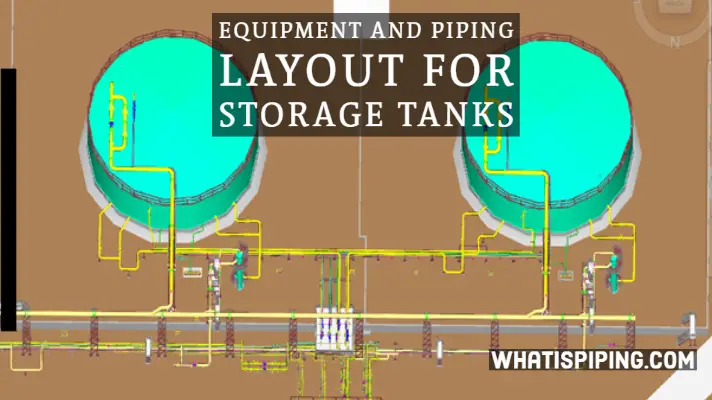
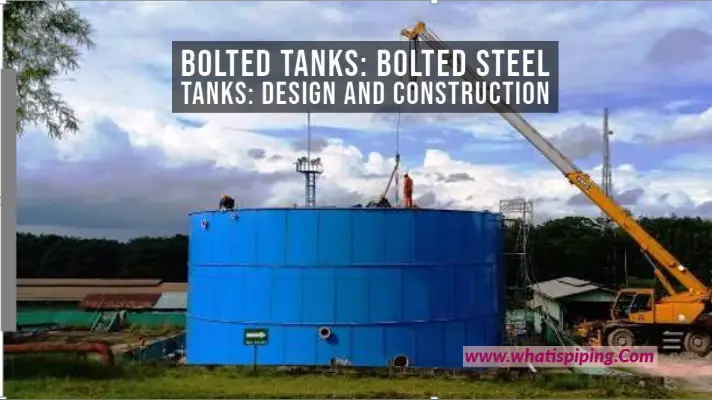
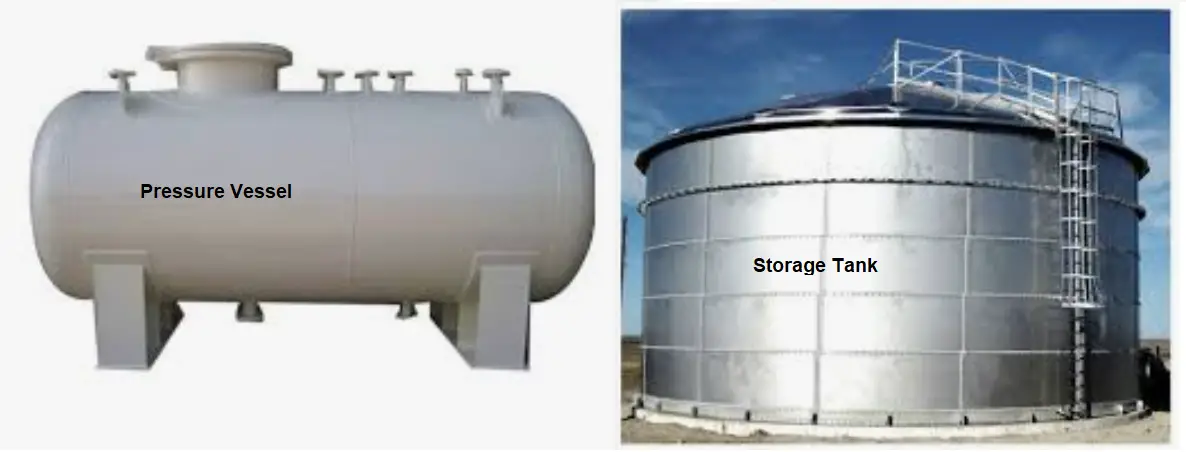
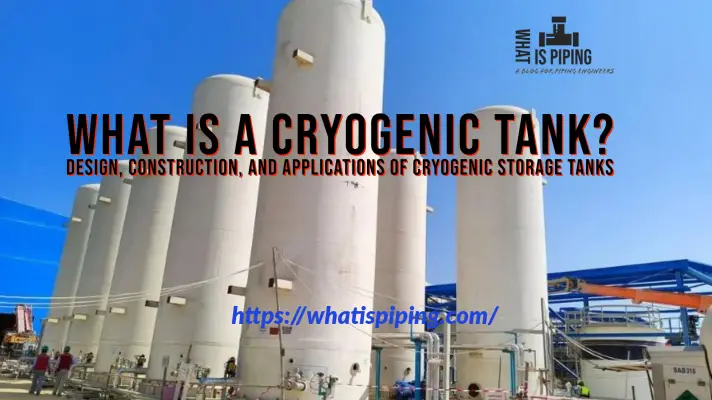
If I am not wrong tank pad is the foundation of the tank and above which tank is later fabricated. I would like to know how the button plate/tank is erected then after? How button plate and walls are attached to the foundation.
Heloo Anup,
Thanks for the article. Please chare the rations of sand/bitumen/quarry dust for installation of a sand/bitumen pad for an API 650 tank
Hi Mr Anup
Thanks for your kind technical assistance to let us do understand more and more about tanks construction and to be honest currently I’m in tanks construction project so what u have explained ,now we are facing but your blogs really is one of the greatest support for any engineer who is interested in tanks construction .
So if possible can u add about tanks Hatches( vent hatches )and more about Tanks gauging system using RADAR type
Hi Dear mr.Anup
I am Hasan from Bangladesh and going have a chemicals stroage tank
which is 500m3 i need your advice how i can do my civil construction.
from my engineers i have got the design which is making me confused. so please try to help me.
thanks
miahasans@gmail.com
service provider of heavy construction equipments on rentals